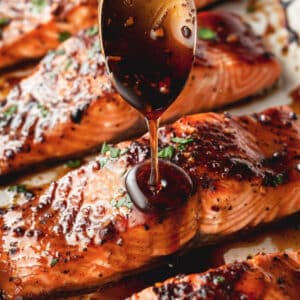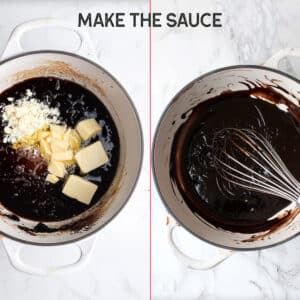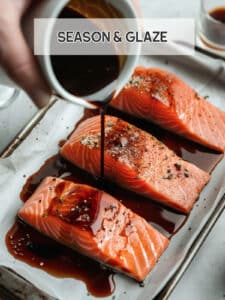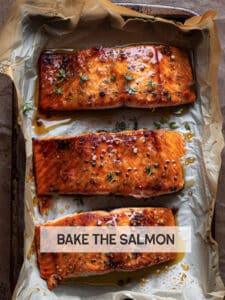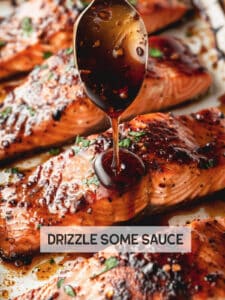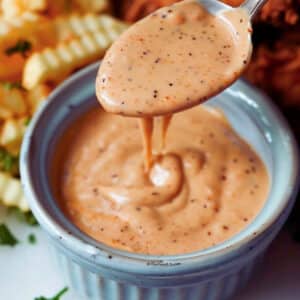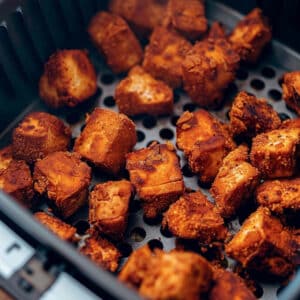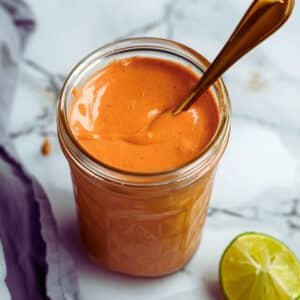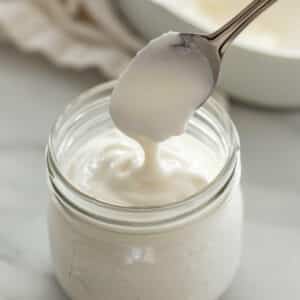Tired of bland salmon? Elevate your dinner with this honey glazed salmon. The sweet and garlicky sauce caramelizes beautifully, creating an explosion of flavor with every bite. Plus, the juicy, tender salmon is impossible to resist. And did we mention it's ready in 20 minutes?
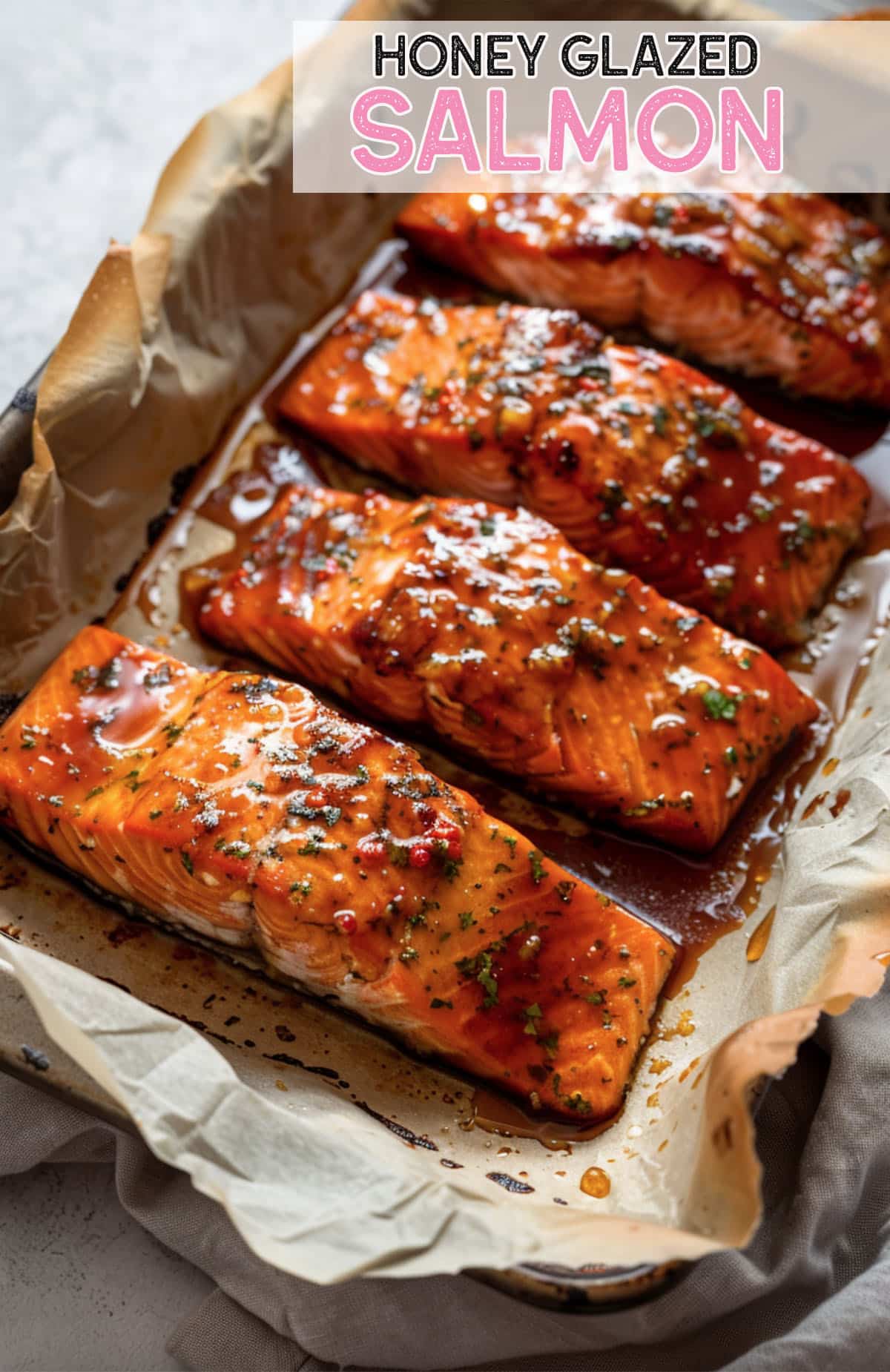
I love a quick and healthy dinner, and salmon is my go-to! This honey glazed salmon recipe is a lifesaver – it's nutritious, incredibly flavorful, and whips up in just 20 minutes. The tender fish and that sweet, salty, garlicky sauce make it feel like a gourmet meal without any of the fuss.
Ingredients You'll Need:
- Salted butter (or olive oil for a healthier option)
- Garlic cloves (minced) and garlic powder
- Honey
- Soy sauce (or Tamari for gluten-free)
- Salmon fillets (5-7 ounces each)
- Sea salt
- Black pepper (freshly ground)
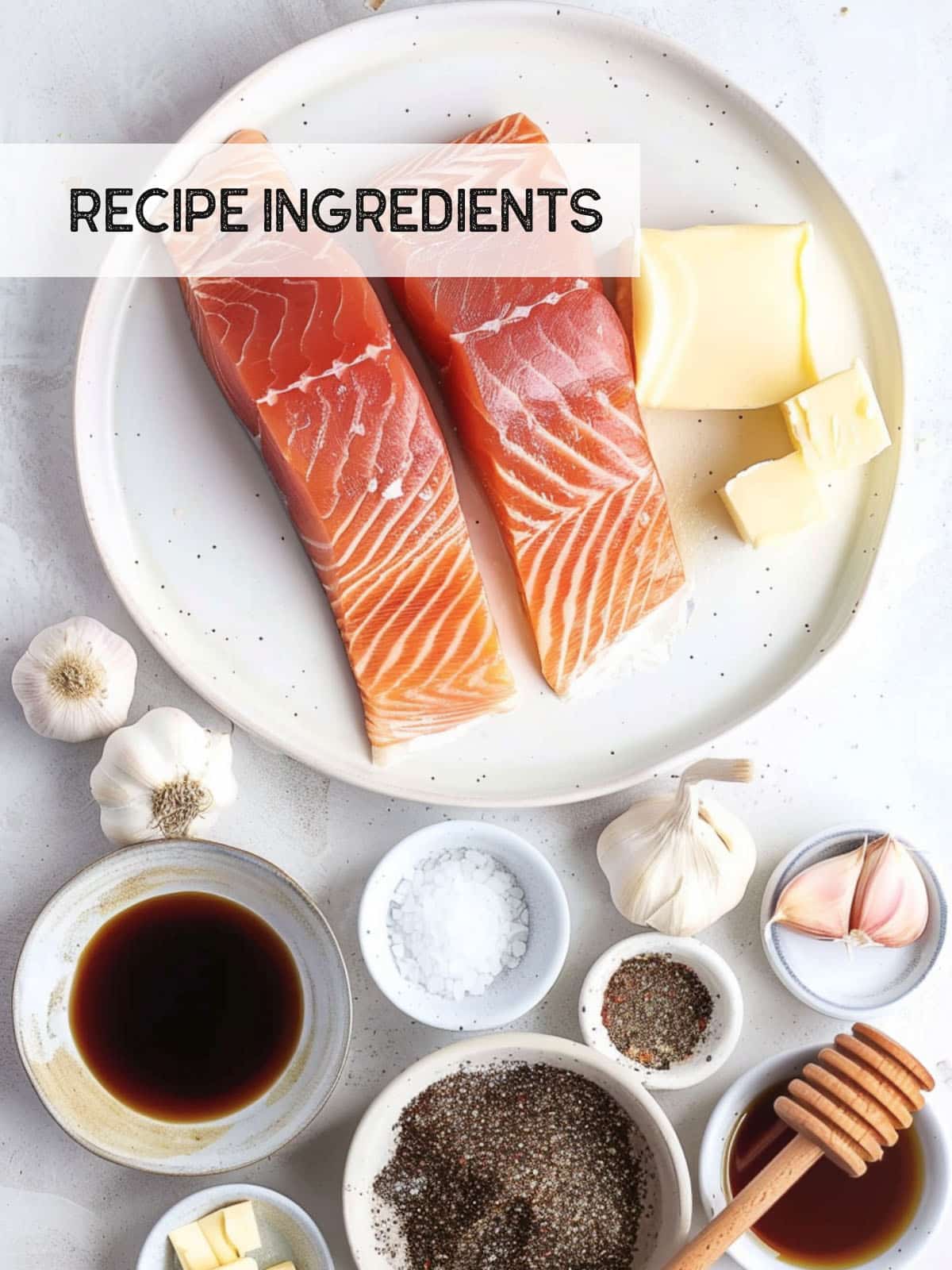
Step by Step Instructions
Get Prepped. Preheat your oven to 425°F (220°C). Line a baking sheet with parchment paper or foil for easy cleanup.
Craft your Glaze. In a small saucepan over medium-high heat, combine butter, soy sauce, honey, and garlic. Whisk until smooth and let it simmer for 3 minutes – the sauce will thicken slightly
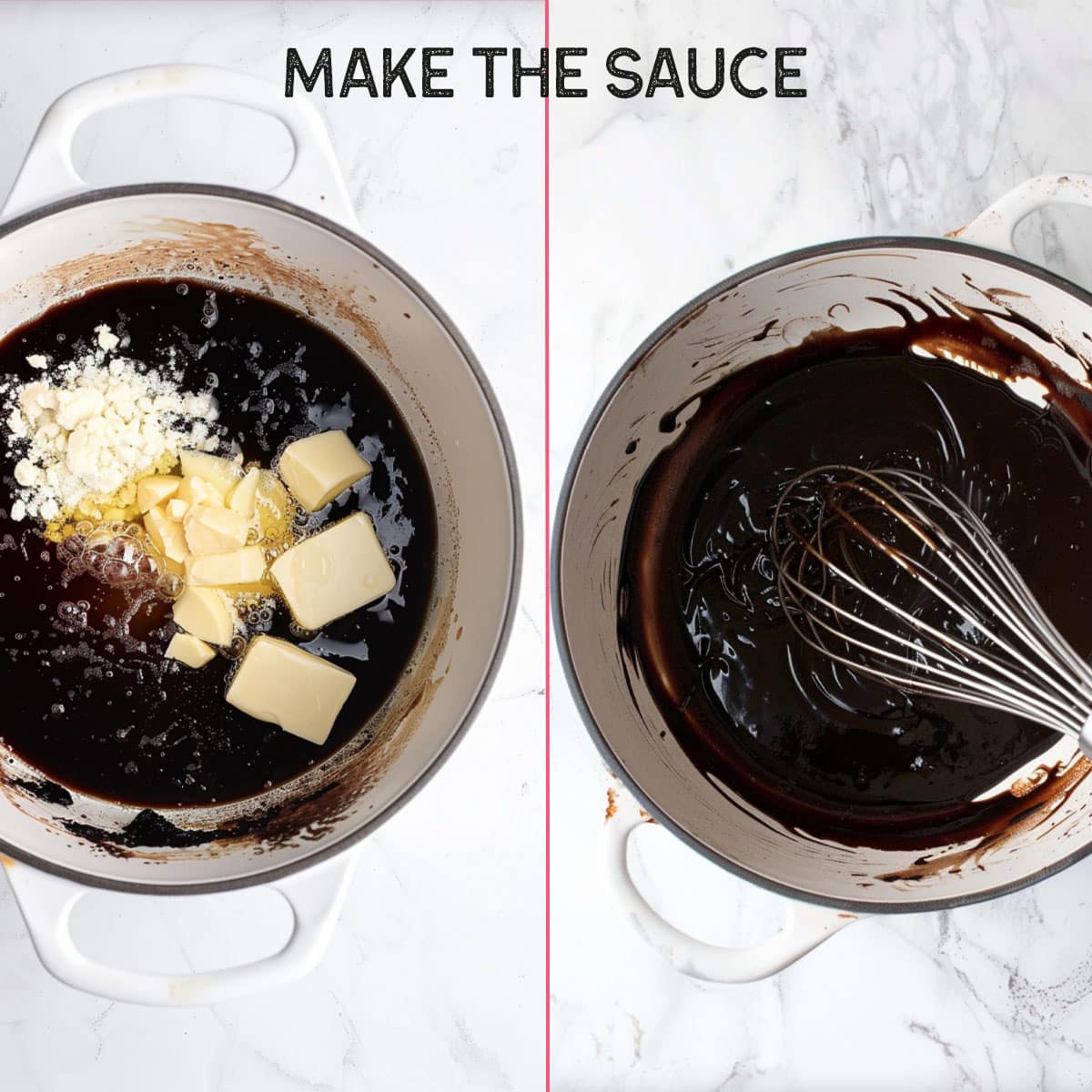
Season and Glaze. Arrange salmon fillets on your prepared baking sheet. Season generously with salt, pepper, and garlic powder. Pour the luscious glaze over the salmon, making sure to coat it well.
Note: Skip pre-marinating – the caramelized sauce and seasoning add plenty of flavor to your honey glazed salmon.
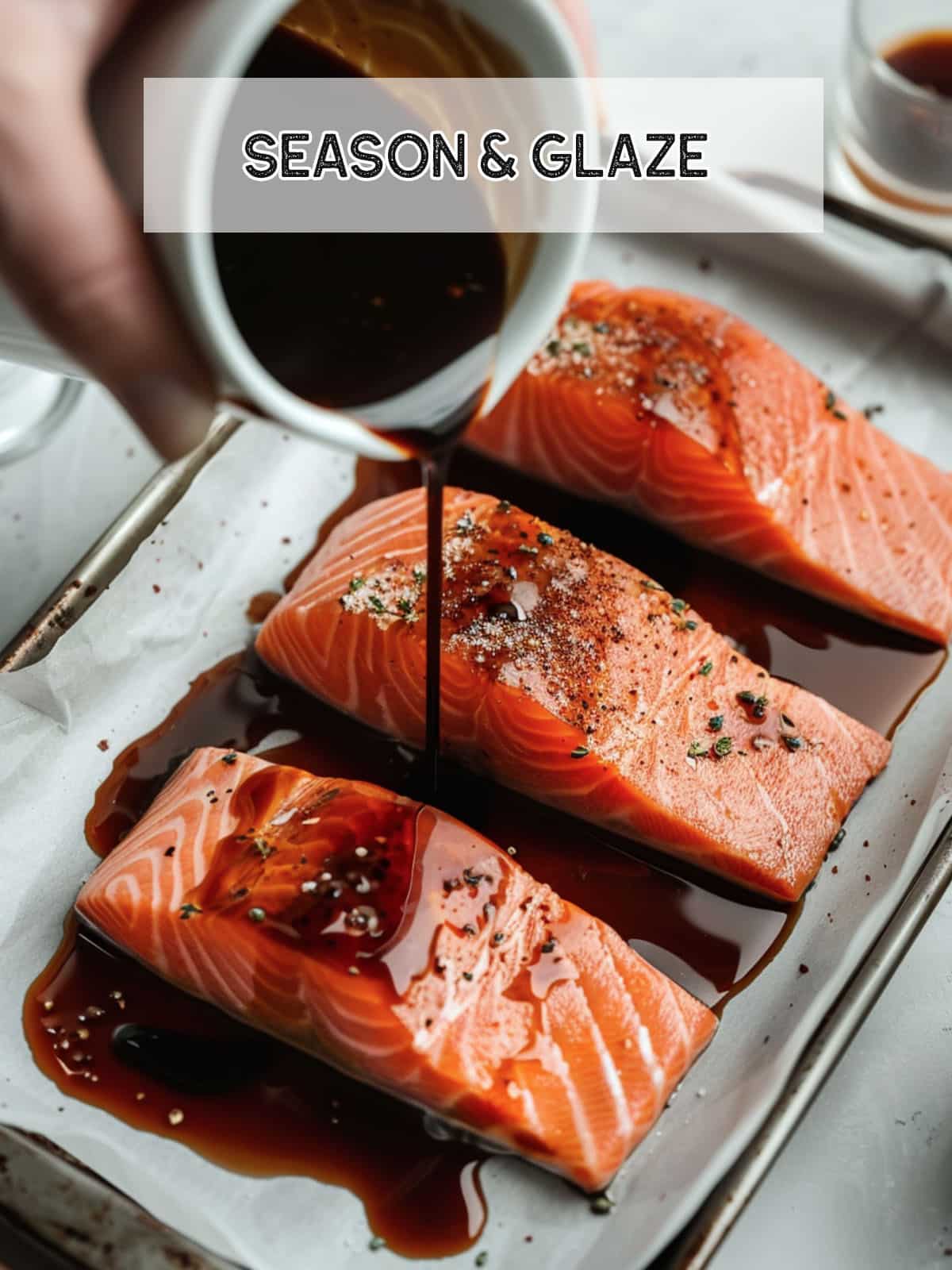
Bake the Salmon. Bake for 12 minutes, or until the salmon is cooked through and flakes easily. Give those fillets extra shine! Spoon any pan sauce over the salmon for maximum flavor. Serve immediately and enjoy!
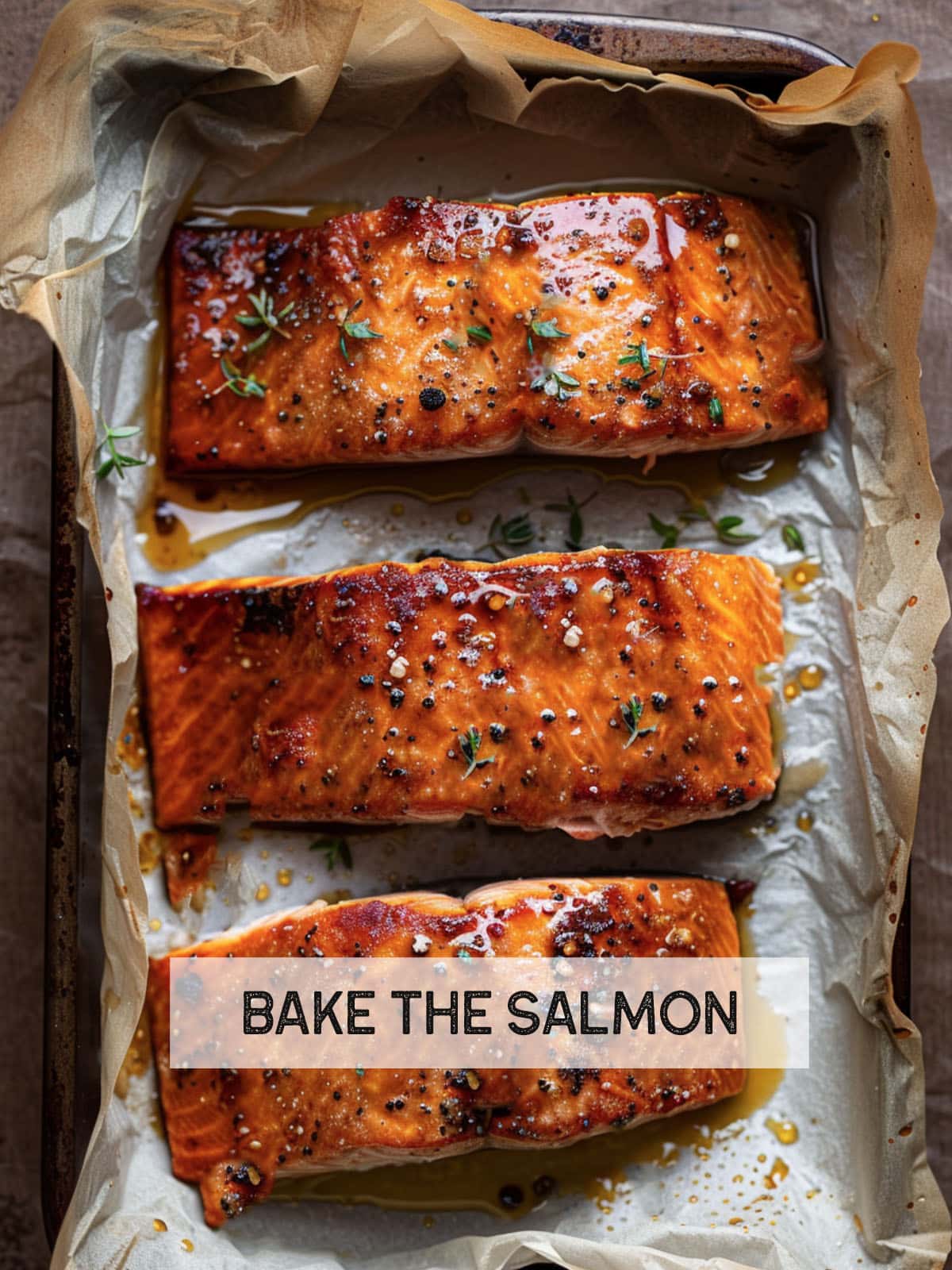
Finish. Spoon any remaining sauce over the salmon for extra flavor, then serve immediately.
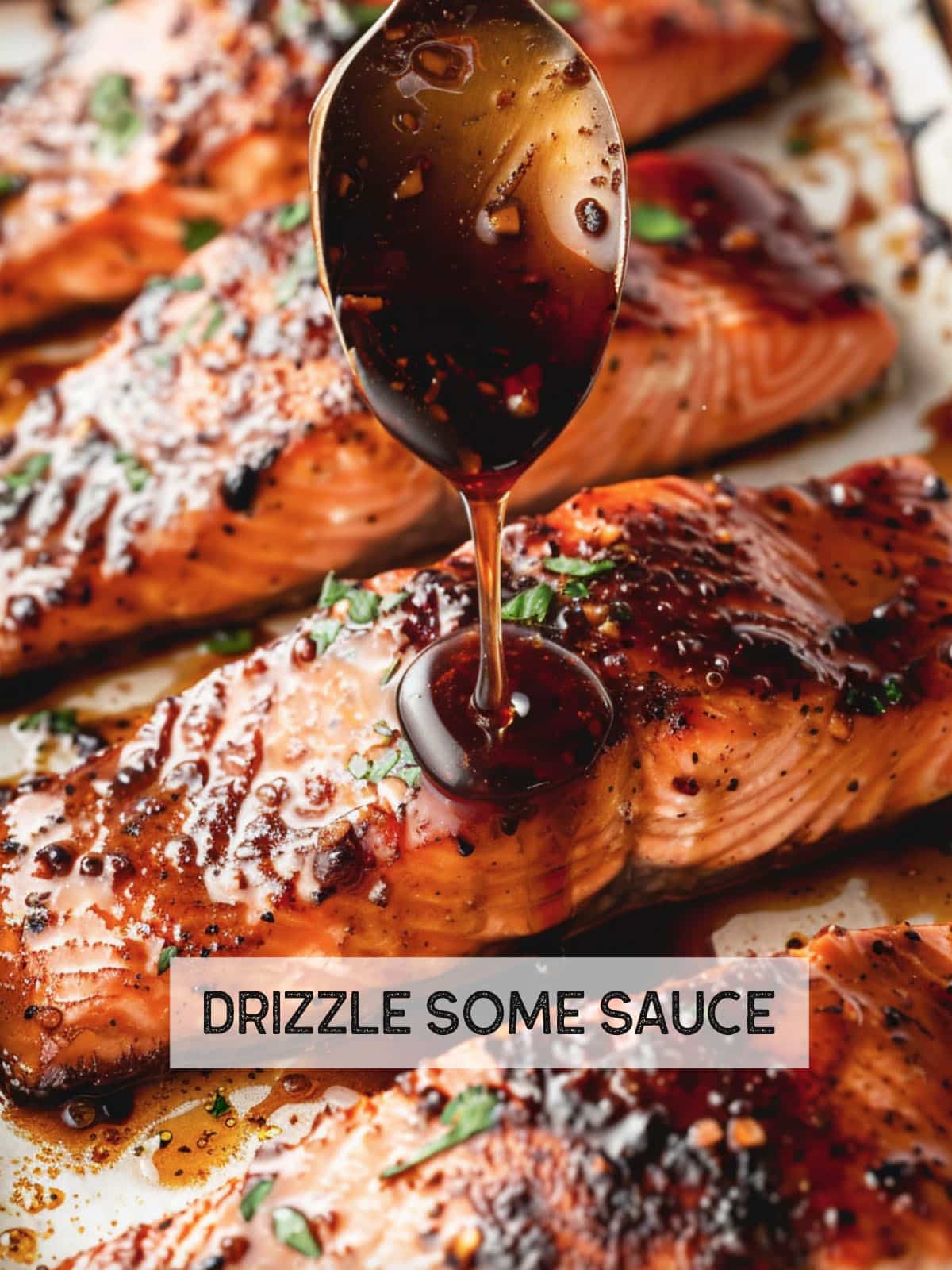
Full Recipe
Honey Glazed Salmon Recipe
Pin RecipeEquipments:
- baking sheet
Ingredients:
- 4 pieces Salmon fillets (7 oz each)
- 2 teaspoon sea salt
- 2 teaspoon black pepper (freshly ground)
- 2 tsp garlic powder
Honey Glaze Ingredients:
- ½ cup salted butter (or olive oil)
- 5 cloves garlic (freshly minced)
- ½ cup honey (you can adjust the amount of honey for sweetness)
- ¼ cup soy sauce (or Tamari for gluten-free option)
Instructions:
- Get Prepped. Preheat your oven to 425°F (220°C). Line a baking sheet with parchment paper or foil for easy cleanup.
- Craft your Glaze. In a small saucepan over medium-high heat, combine butter, soy sauce, honey, and garlic. Whisk until smooth and let it simmer for 3 minutes – the sauce will thicken slightly.
- Season and Glaze. Arrange salmon fillets on your prepared baking sheet. Season generously with salt, pepper, and garlic powder. Pour the luscious glaze over the salmon, making sure to coat it well.Note: Skip pre-marinating – the caramelized sauce and seasoning add plenty of flavor to your honey glazed salmon.
- Bake the Salmon. Bake for 12 minutes, or until the salmon is cooked through and flakes easily. Give those fillets extra shine! Spoon any pan sauce over the salmon for maximum flavor. Serve immediately and enjoy!
- Finish. Spoon any remaining sauce over the salmon for extra flavor, then serve immediately.
Notes:
How to reheat salmon
Get the most out of your leftover honey glazed salmon! Here's how to reheat it for the best flavor and texture: Best Methods:- Oven: Ideal for gentle, even reheating.
- Stovetop: Great for a quick warm-up and crispy skin.
- Air Fryer: Perfect for a fast, crispy finish.
Tips for perfect honey glazed salmon
- Even Cooking: Choose salmon fillets of similar size for consistent cooking times. This prevents the dilemma of some pieces being overdone while others are undercooked.
- Fresh Garlic, Big Flavor: Freshly minced garlic offers the best flavor punch. Avoid pre-minced or peeled garlic as they often lack the same vibrancy.
- Customize Cook Time: The 12-minute cook time is ideal for 5-7 ounce fillets. Adjust slightly up or down depending on the size of your salmon pieces and your desired level of doneness.
- Bonus Tip: Temperature Check: If you're unsure about doneness, use an instant-read thermometer. The internal temperature of cooked salmon should reach 145°F (63°C).
Troubleshooting your honey glazed salmon
Here's a breakdown of common honey glazed salmon problems and how to address them:1 Overcooked salmon
- Why it Happens: Salmon cooks quickly and dries out easily if left in the heat too long.
- Solutions:
- Use a thermometer: Aim for an internal temperature of 145°F (63°C)
- Visual Cues: Look for opaque flesh that flakes easily with a fork.
- Carryover Cooking: Remove salmon slightly before it seems fully done; it will continue cooking while resting.
2 Undercooked salmon
- Why it Happens: Not baking/grilling long enough, or thick portions needing additional time.
- Solutions:
- Time Adjustments: Increase cook time slightly, especially if your salmon is thick.
- Thermometer Check: If unsure, use a thermometer to verify doneness (145°F/63°C).
- Quick Finish: Return undercooked salmon to the oven/grill briefly to reach the desired doneness.
3 Glaze too thick
- Why it Happens: Over-reducing the sauce, making it difficult to spread or too sweet.
- Solutions:
- Dilution: Whisk in a tablespoon or two of hot water to thin it out.
- Preventative: Simmer the glaze gently and check consistency frequently.
4 Glaze too thin
- Why it Happens: Sauce not reduced enough, resulting in a lack of flavor and glaze not sticking to the salmon.
- Solutions:
- Simmer Longer: Continue reducing the glaze over low heat until thickened.
- Cornstarch Slurry: Whisk a tiny amount of cornstarch (1tsp) with cold water (1 tbsp), then stir into the sauce.
5 Burnt glaze
- Why it Happens: The sugars in the glaze caramelize quickly and can burn if the heat is too high or it's left unattended.
- Solutions:
- Temperature Control: Cook the glaze over medium-low heat.
- Watch Closely: Stir frequently, especially during the final stages.
- Rescue Attempt: If slightly burnt, strain the glaze through a fine-mesh sieve to remove any burnt bits.
Nutrition Information:
Please note that all nutrition information are just estimates. Values will vary among brands, so we encourage you to calculate these on your own for most accurate results.
Tips for Perfect Honey Glazed Salmon
- Even Cooking: Choose salmon fillets of similar size for consistent cooking times. This prevents the dilemma of some pieces being overdone while others are undercooked.
- Fresh Garlic, Big Flavor: Freshly minced garlic offers the best flavor punch. Avoid pre-minced or peeled garlic as they often lack the same vibrancy.
- Customize Cook Time: The 12-minute cook time is ideal for 5-7 ounce fillets. Adjust slightly up or down depending on the size of your salmon pieces and your desired level of doneness.
- Bonus Tip: Temperature Check: If you're unsure about doneness, use an instant-read thermometer. The internal temperature of cooked salmon should reach 145°F (63°C).
Choosing & Prepping Your Salmon
- Skin-On or Off: Skin-on is great for pan-searing (crispy skin!) and helps the fish hold its shape. Skinless works just fine, especially for delicate baking.
- Fresh or Frozen: Both can work! If using frozen, thaw completely in the refrigerator overnight for best texture.
- Pat Dry: Blot excess moisture off the salmon before seasoning for better browning and glaze adhesion.
Mastering the Glaze
- Flavor Boost: Add a touch of Dijon mustard, a pinch of red pepper flakes, grated ginger, or citrus zest to your glaze for a flavor twist.
- Adjust Sweetness: Taste the glaze before adding it to the salmon—too sweet? Add a squeeze of lemon or lime juice to balance.
- Thickening Options: If your glaze is thin, simmer it a bit longer or whisk in a tiny bit of cornstarch mixed with water (1 teaspoon cornstarch: 1 tablespoon cold water) at the end.
Cooking Techniques
- Doneness Check: Aim for an internal temp of 145°F (63°C), or gently flake the center with a fork – it should be opaque.
- Avoiding Overcooking: Salmon dries out quickly, so err on the side of slightly undercooked – carryover heat will finish it while resting.
If you want the most flavorful baked, pan-seared, or grilled salmon with a gorgeous caramelized glaze, there's one simple secret: basting! Here's why it matters and how to do it right.
Baked Salmon: During baking, baste the salmon with the reserved glaze every 10-12 minutes. This adds flavor and helps create that beautiful golden-brown finish.
Pan-Seared Salmon: Once the salmon is seared, keep the pan juices! Add a splash of the glaze and baste the salmon during the final minutes of cooking for extra flavor and shine.
Grilled Salmon: Basting is key for grilled salmon! Brush the salmon with glaze a few times during grilling. This helps prevent drying and creates that delicious caramelization.
Additional Tips:
- Reduce the Glaze (Optional): For a thicker glaze that's perfect for basting, simmer it gently to reduce it slightly.
- Timing Matters: Start basting halfway through the cooking time to avoid burning the glaze.
Extra Touches
- Broil Finish: For caramelized glaze, broil the salmon for 1-2 minutes at the very end (watch closely!).
- Garnish Power: Sprinkle with toasted sesame seeds, fresh herbs, or thinly sliced scallions for presentation points.
Overcooking is the most common reason for dry salmon. If you want to learn more about preventing it, check out our guide here.
How to Reheat Salmon
Get the most out of your leftover honey glazed salmon! Here's how to reheat it for the best flavor and texture:
Best Methods:
- Oven: Ideal for gentle, even reheating.
- Stovetop: Great for a quick warm-up and crispy skin.
- Air Fryer: Perfect for a fast, crispy finish.
For step-by-step instructions and specific tips for each method, check out our comprehensive guide: How to Reheat Salmon. And for those times when things don't go perfectly, learn the Mistakes to Avoid When Reheating Salmon to salvage your leftovers.
Troubleshooting your Honey Glazed Salmon
Here's a breakdown of common honey glazed salmon problems and how to address them:
1 Overcooked Salmon
- Why it Happens: Salmon cooks quickly and dries out easily if left in the heat too long.
- Solutions:
- Use a thermometer: Aim for an internal temperature of 145°F (63°C)
- Visual Cues: Look for opaque flesh that flakes easily with a fork.
- Carryover Cooking: Remove salmon slightly before it seems fully done; it will continue cooking while resting.
2 Undercooked Salmon
- Why it Happens: Not baking/grilling long enough, or thick portions needing additional time.
- Solutions:
- Time Adjustments: Increase cook time slightly, especially if your salmon is thick.
- Thermometer Check: If unsure, use a thermometer to verify doneness (145°F/63°C).
- Quick Finish: Return undercooked salmon to the oven/grill briefly to reach the desired doneness.
3 Glaze Too Thick
- Why it Happens: Over-reducing the sauce, making it difficult to spread or too sweet.
- Solutions:
- Dilution: Whisk in a tablespoon or two of hot water to thin it out.
- Preventative: Simmer the glaze gently and check consistency frequently.
4 Glaze Too Thin
- Why it Happens: Sauce not reduced enough, resulting in a lack of flavor and glaze not sticking to the salmon.
- Solutions:
- Simmer Longer: Continue reducing the glaze over low heat until thickened.
- Cornstarch Slurry: Whisk a tiny amount of cornstarch (1tsp) with cold water (1 tbsp), then stir into the sauce.
5 Burnt Glaze
- Why it Happens: The sugars in the glaze caramelize quickly and can burn if the heat is too high or it's left unattended.
- Solutions:
- Temperature Control: Cook the glaze over medium-low heat.
- Watch Closely: Stir frequently, especially during the final stages.
- Rescue Attempt: If slightly burnt, strain the glaze through a fine-mesh sieve to remove any burnt bits.
Additional Tips:
- Even Cooking: Choose salmon fillets of similar thickness.
- Basting: Baste with leftover glaze during baking/grilling for flavor and shine.

